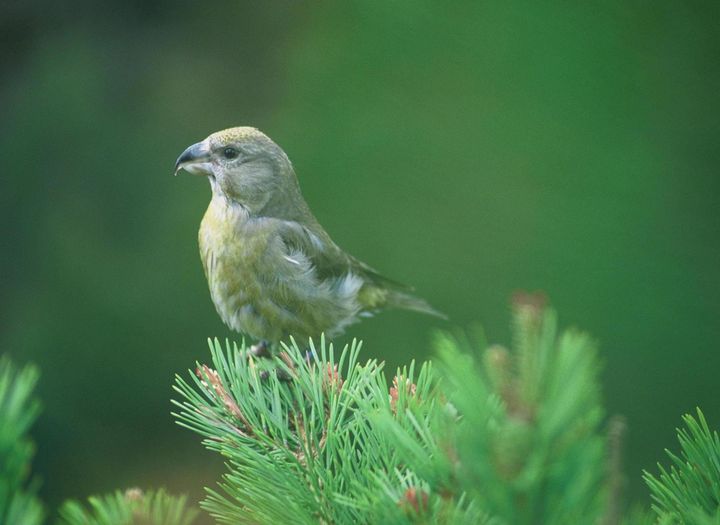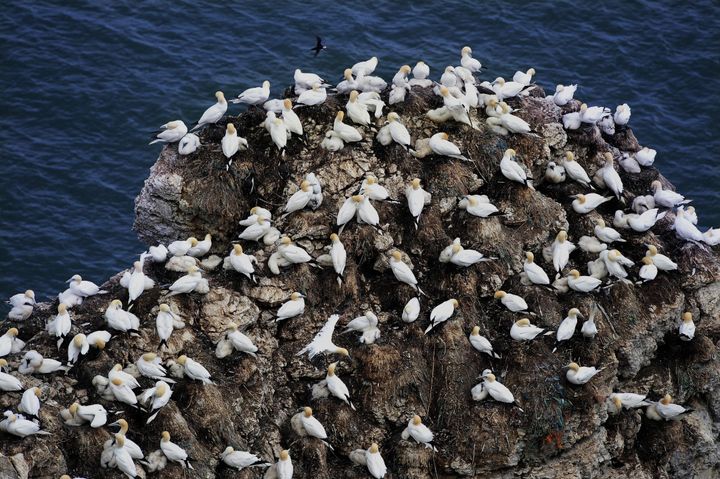Rare breeding birds are becoming increasingly vulnerable to extinction in the UK due to climate change, a new report reveals.
Species such as dotterel, whimbrel, common scoter and Slavonian grebe are all said to be in danger, based on projections around the impact of global warming.
The findings come from a new report compiled by the RSPB, the British Trust for Ornithology (BTO) and the Wildfowl and Wetlands Trust (WWT), along with various statutory nature conservation bodies.
Experts fear that the Scottish crossbill, which is found only in Scotland, is at risk of becoming extinct altogether.

By contrast, however, some other birds were found to have thrived in the warmer, wetter climate, which has enabled them to expand their range further north.
The study found climate change is already affecting bird life in the four countries of the UK, which is responding to a 1C (1.8F) increase in average summer temperatures since the 1980s.
“Birds in the UK are showing changes in abundance and distribution, predominantly moving northwards, in a way that is consistent with a changing climate,” the report said.
“Migratory birds are arriving earlier and egg-laying dates have advanced such that swallows, for example, are arriving in the UK 15 days earlier, and breeding 11 days earlier, than they did in the 1960s.”
For species such as the dotterel, whimbrel, common scoter and snow bunting – whose UK breeding populations are found almost entirely in Scotland – population declines are said to have been considerable already.
Breeding success of the Slavonian grebe has also been impacted, with Scotland on average 11% wetter between 2007-2016 than it was in 1961-1990

The report went on: “The UK’s kittiwake population has declined by 70% since 1986 because of falling breeding success and adult survival.
“Climate change has reduced the availability of the sandeels they rely upon in the breeding season.
“Other species that feed largely on sandeels, such as Arctic skua, Arctic tern and puffin, are at high risk of climate-related decline.”
On a more positive note, the report also found that warmer temperatures during the breeding season have had a positive effect on breeding success for a range of species.
Birds that feed insects to their young, such as great tits and chaffinches, have improved their productivity in warm, dry springs, while nuthatch, goldfinch and chiffchaff have been expanding their range into Scotland over the last 30 years with large increases in numbers north of the border.
Dr David Douglas, principal conservation scientist at RSPB Scotland, said: “The recent research compiled in this year’s The State of the UK’s Birds report shows that many birds in Scotland are being affected by a changing climate.
“For some birds this means they are becoming increasingly vulnerable to UK extinction, including many species where most, if not all, of the breeding population is found in Scotland.
“Other birds appear to have thrived in this warmer, wetter climate, which has allowed them to expand their range further north.”
Colette Hall, of WWT, said: “Each winter, tens of thousands of waterbirds migrate to the UK and our long-running network of volunteer waterbird counters has tracked their changes over decades.
“Warmer winters on the continent have meant more birds of certain species wintering further east, such as the European white-fronted goose.
“However, that trend can mask real declines in some species, such as the Bewick’s swan and the common pochard.
“For this reason, amongst many others, it is vital we continue to monitor our bird populations so we can pinpoint where, and subsequently try to work out why, these changes are happening.”
